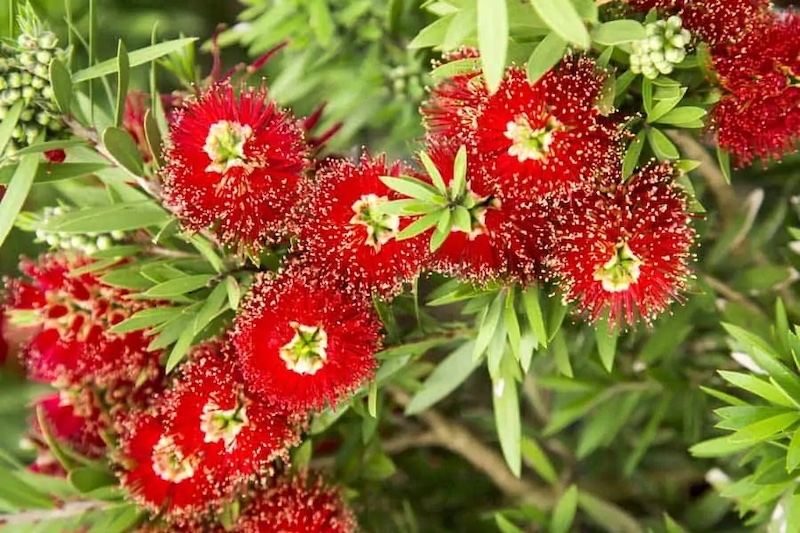Bottlebrush is the common name of Callistemon spp. and Aesculus parviflora. Although these shrubs may have differences in drought tolerance, foliage size, and sun exposure, they both prefer soil that is acidic and very well-draining. Bottlebrush shrubs growing in a neutral to alkaline pH will show signs of interveinal chlorosis. The youngest leaves will turn yellow with green veins. Mature shrubs that are planted in their preferred conditions may only require fertilizing once every 2-3 years, making these shrubs a great low-maintenance option in the garden.

How to Fertilize Bottlebrush
When planting in a new garden or even a different location of the garden, a pH soil test will help to determine what types of plants will thrive. A pH test kit is quick and easy to use, providing reliable results. Bottlebrushes require acidic soil in the range of 6.5-5.0.
Use a granular, slow-release fertilizer early in the spring to provide support during the growing season. Dry fertilizer can burn tender leaves if it is not thoroughly washed off. Always water shrubs well after fertilizing to dissolve the nutrients into the soil.
Best Time To Fertilize Bottlebrush
Bottlebrush shrubs need feeding in the first year after planting and then only once every 2-3 years. The best time of the year to feed is in the early spring as the new growth begins.
Best Fertilizer For Bottlebrush
The best fertilizer for Bottlebrush is formulated for acid-loving plants. Look for brands that have the OMRI designation. This stands for Organic Material Review Institute and ensures that all of the ingredients of the fertilizer meet the USDA organic growers guidelines. Espoma Holly-tone is the best known organic fertilizer for acid lovers and has a good ratio of NPK to support both healthy foliage and good flowering. Acid fertilizers also have added amounts of sulfur to keep the soil acidic.
Bottlebrush Fertilizing Tips
- Use a formulation for acid-loving plants
- Fertilize when initially planting the shrubs
- Fertilize only every 2-3 years
- A slow-release, granular fertilizer applied in the spring will sustain the plant during the main period of growth
Warnings
-Always wear protective gloves and a face mask when handling chemical fertilizers.
-Closely follow all directions and storage guidelines that are on the fertilizer label.
 |
Author Robbin Small - Published 5-15-2023 |
